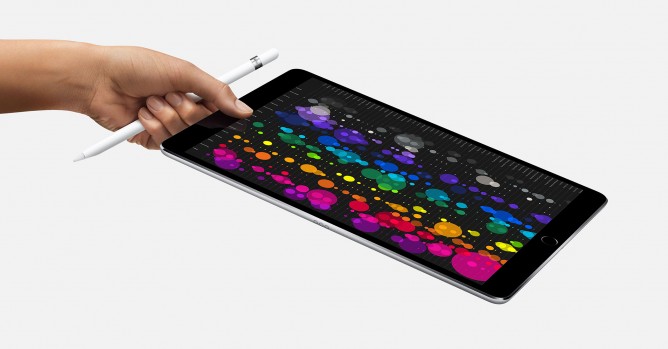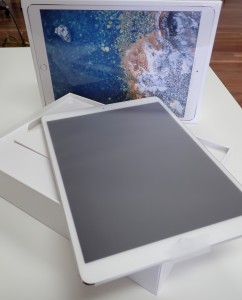
iPad is a good device I have been using for years, and it remains my primary content consumption device. I spent fair amount of efforts in the past to make it functions as productivity tool. I got myself Bamboo active stylus for iPad, got myself multiple Bluetooth keyboards and case with built-in keyboard. They all worked, but nothing was good enough to make me use iPad as actual productivity device.
I was one of the skeptics when Apple announced their first iPad Pro. I still love the size of my iPad mini and it’s very easy to understand why I feel that iPad Pro 12.9″ is overwhelmingly too big. That’s not the kind of size I am willing to carry around to places to replace a good ultra-portable laptop. When they offered 9.7″ iPad Pro, I was tempted. I went to an Apple Store to play around with the device and I wasn’t really impressed. It was not bad at all, but also wasn’t compelling enough for me to spend its premium price tag. Mostly because of third party apps’ limited support of Apple Pencil back then.
Having concluded that it’s not a device for me, I stopped reading stuff about iPad Pro, until they announced iOS 11. It was hard to miss all the articles and reviews about how iOS 11 is going to change how users are going to use iPad for productivity, hence I decided to give it another look. I was a bit disappointed knowing that Apple no longer offers 9.7″ model. They have all-new 10.5″ model now, with slightly bigger form factor. Tested a demo unit in Apple Store and concluded that the extra dimension is not a big issue, thanks to the thinner bezel. Had another round using Apple Pencil with iPad Pro demo unit and this time I was quite impressed with my writing experience.
 So I decided to get one, thinking that if I really don’t like it, I can always use Apple’s 14 days return policy.
So I decided to get one, thinking that if I really don’t like it, I can always use Apple’s 14 days return policy.
Opening the box, nothing special. It’s the usual unboxing experience we get with almost all Apple devices. Our shiny new gadget is wrapped in plastic, ready for us to use. Inside the box there’s a charger, lightning cable and some printed materials that I don’t think anyone ever actually read them.
iPad Pro 10.5″ feels solid on my hands (469 grams). At first glance, most of my friends thought it’s a normal-sized 9.7″ iPad Air. Perhaps rightfully so, because it does look very similar. On the right side, we can see three smart connector dots that will handle data transfer with compatible keyboards without using Bluetooth.
This iPad Pro packs 12 MP back-camera with ƒ/1.8 aperture, 7 MP front-camera, A10X Fusion chip with 64‑bit architecture and four speakers audio. Its beautiful display uses the usual Retina display with 2224-by-1668 resolution at 264 pixels per inch (ppi), ProMotion technology, wide colour display (P3), True Tone display, fingerprint-resistant oleophobic coating, fully laminated display and antireflective coating. The new screen resolution would create new fragmentation for iOS developers, but Apple’s approach on this using auto zooming might just work until there are more apps supporting iPad Pro 10.5″ native resolution.
Using apps feels very smooth, as expected from the faster hardware of Pro models. The True Tone display actually makes my screen more enjoyable for 2+ hours sessions of work. The camera, I don’t even care to test it. I always laugh at people using iPad to take photos, and I’m not going to be one of them.
I am fully aware that I haven’t actually used the true potential of this tablet until iOS 11 is officially released. Therefore, this is still a first impression post, and I will write another review once we have iOS 11. So far, this tablet does not disappoint. Clearly this will not replace my iPad mini as my main device for content consumption, but this Pro tablet serves its purpose well for laptop replacement with ultra-portability in mind.

Leave A Comment